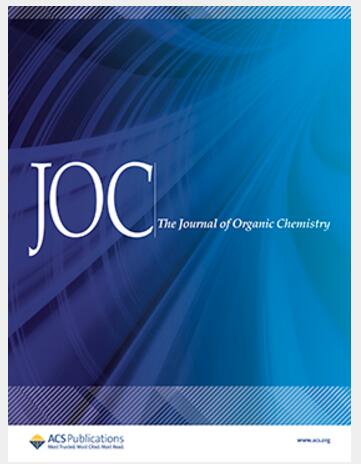镍催化烷基胺衍生自由基前体与芳基碘化物的电诱导交叉亲电偶联。
IF 3.3
2区 化学
Q1 CHEMISTRY, ORGANIC
Journal of Organic Chemistry
Pub Date : 2024-11-15
Epub Date: 2023-05-23
DOI:10.1021/acs.joc.3c00859
引用次数: 0
摘要
近年来,"逃离平原 "的趋势促使合成界开发出一套交叉偶联策略,在有机化合物中引入以 sp3 碳为基础的片段。本研究介绍了一种新型的镍催化电化学还原交叉亲电偶联方法。该方法利用廉价的胺衍生自由基前体和芳基碘化物实现了 C(sp2)-C(sp3)连接。使用电化学作为动力源可减少浪费并避免使用化学还原剂,从而使这种方法成为传统交叉偶联方法的一种更具可持续性的替代方法。本文章由计算机程序翻译,如有差异,请以英文原文为准。
Ni-Catalyzed Electro-Reductive Cross-Electrophile Couplings of Alkyl Amine-Derived Radical Precursors with Aryl Iodides.
In recent years, the "Escape-from-Flatland" trend has prompted the synthetic community to develop a set of cross-coupling strategies to introduce sp3-carbon-based fragments in organic compounds. This study presents a novel nickel-catalyzed electrochemical methodology for reductive cross-electrophile coupling. The method enables C(sp2)-C(sp3) linkages using inexpensive amine-derived radical precursors and aryl iodides. The use of electrochemistry as a power source reduces waste and avoids chemical reductants, making this approach a more sustainable alternative to traditional cross-coupling methods.
求助全文
通过发布文献求助,成功后即可免费获取论文全文。
去求助
来源期刊

Journal of Organic Chemistry
化学-有机化学
CiteScore
6.20
自引率
11.10%
发文量
1467
审稿时长
2 months
期刊介绍:
Journal of Organic Chemistry welcomes original contributions of fundamental research in all branches of the theory and practice of organic chemistry. In selecting manuscripts for publication, the editors place emphasis on the quality and novelty of the work, as well as the breadth of interest to the organic chemistry community.
 求助内容:
求助内容: 应助结果提醒方式:
应助结果提醒方式:


